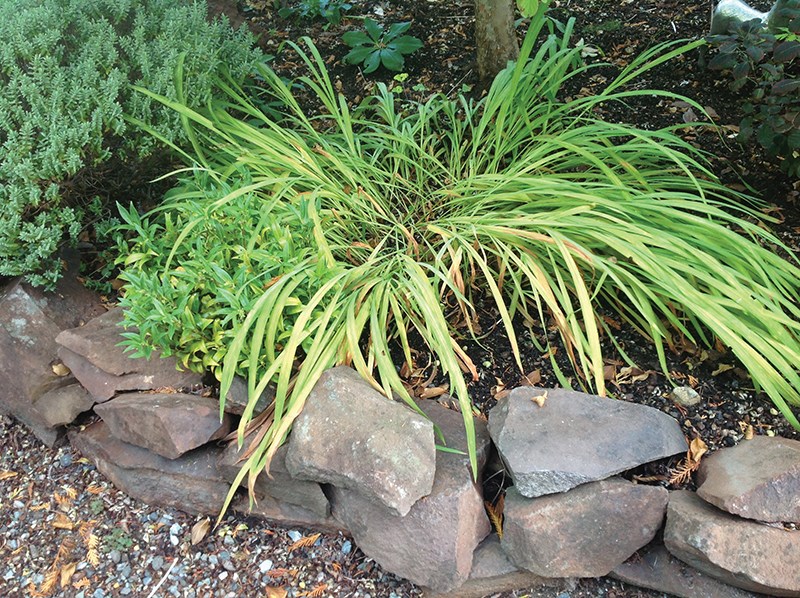Fall is my favourite time in the garden. I love the chill in the air, the changing colours and having the time to sit back and assess how the summer growing season went. I like to take a walk around the garden, and write down what was successful, things I would like to improve upon, what didn’t work.
With all the sunshine and drought Squamish gardeners faced this summer, I have been thinking twice about plant choices and their water requirements. Scientists tell us that hot, dry summers are the new “normal.” We need to reflect this in our landscape selections, and as fall is a great time to do new planting, this water-wise mentality should be at the top of our lists.
Early fall is also the perfect time to move perennials and small shrubs and renovate some of the older and more tired clumps of perennials that seem to flail more each season.
I often field questions from clients about why a certain perennial that used to bloom profusely limps along, not as healthy. Many perennials look good year after year, while others need thinning or dividing every three to five years. Sometimes this is referred to as “renewal division.”
How do you know when your plant needs to be divided? Generally, when you look at the plant, it fails to thrive as it once did, and also, it usually forms a sort of donut shape where the centre of the clump appears to almost die out. The healthy shoots are usually on the outer edge, and often you will see little growth in the interior clumps.
Late summer or early fall is a perfect time to split most perennials. Try to do most of the dividing about a month before hard frosts begin.
Ambitious plants (read: weedy) should be divided ruthlessly (every year or two) to keep them under control before they take over more delicate plants. Plants like aegopodium, ajuga, campanula, convallaria, mondarda and physotegia come to mind.
How will you do your divisions? It’s a personal decision. I like to wait for a cloudy day after a good rain, or I water the day before. If possible, I generally dig up the whole clump and then saw right through the plant and rootball to make smaller chunks. Ideally you should cut straight down around the rootball and try to include as much soil as possible, as this minimizes shock to the plant.
Each chunk should include some of the crown, root and soil. I have been known to use an old serrated bread knife, an old pruning saw or a hori hori knife. Alternatively, you can use a sharp shovel with a flat edge or a garden fork to separate and divide the root ball.
Once you have divided your clumps, have patience, as some transplanted perennials will take a while to reestablish and become large enough to bloom again.
Happy dividing.



